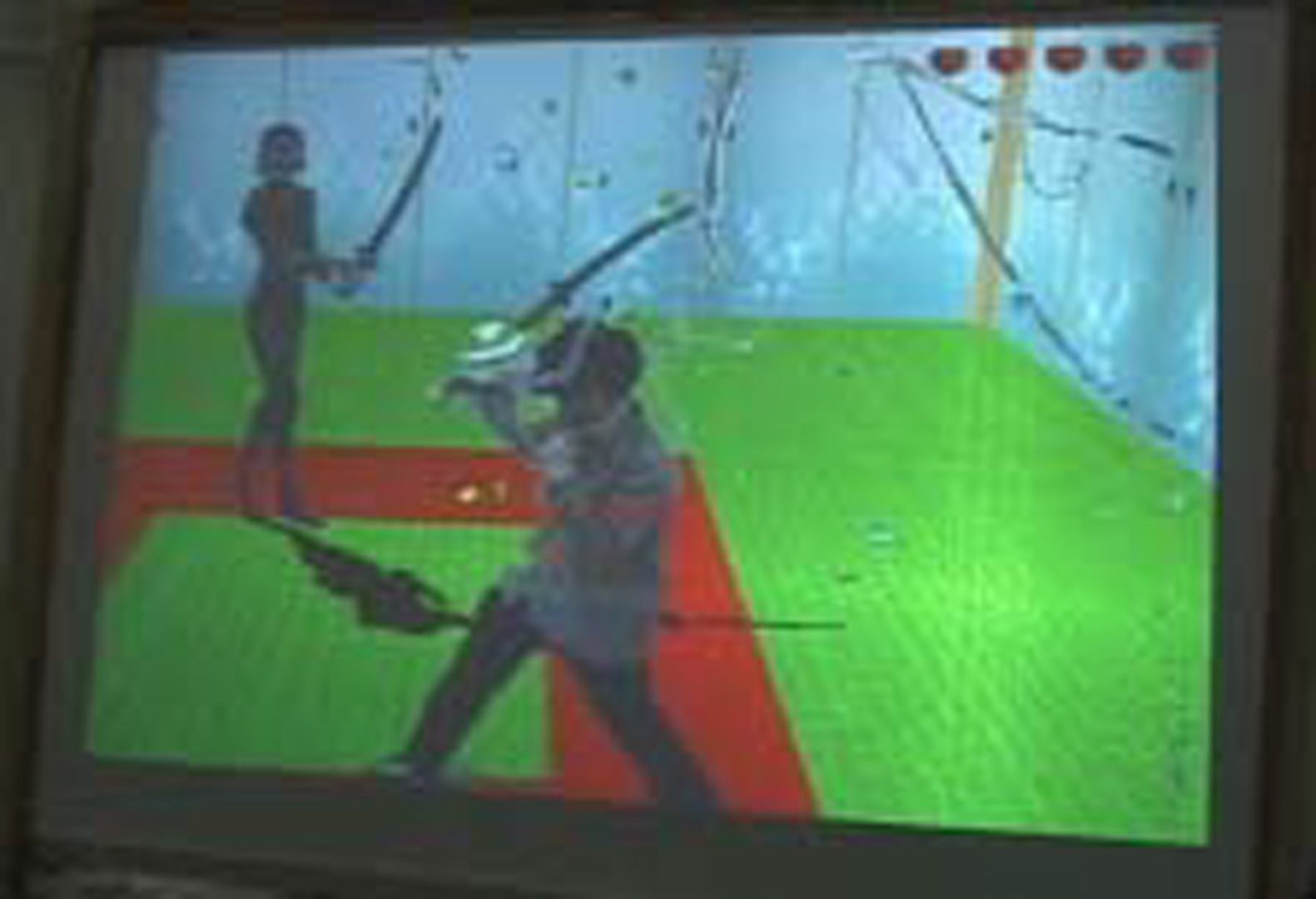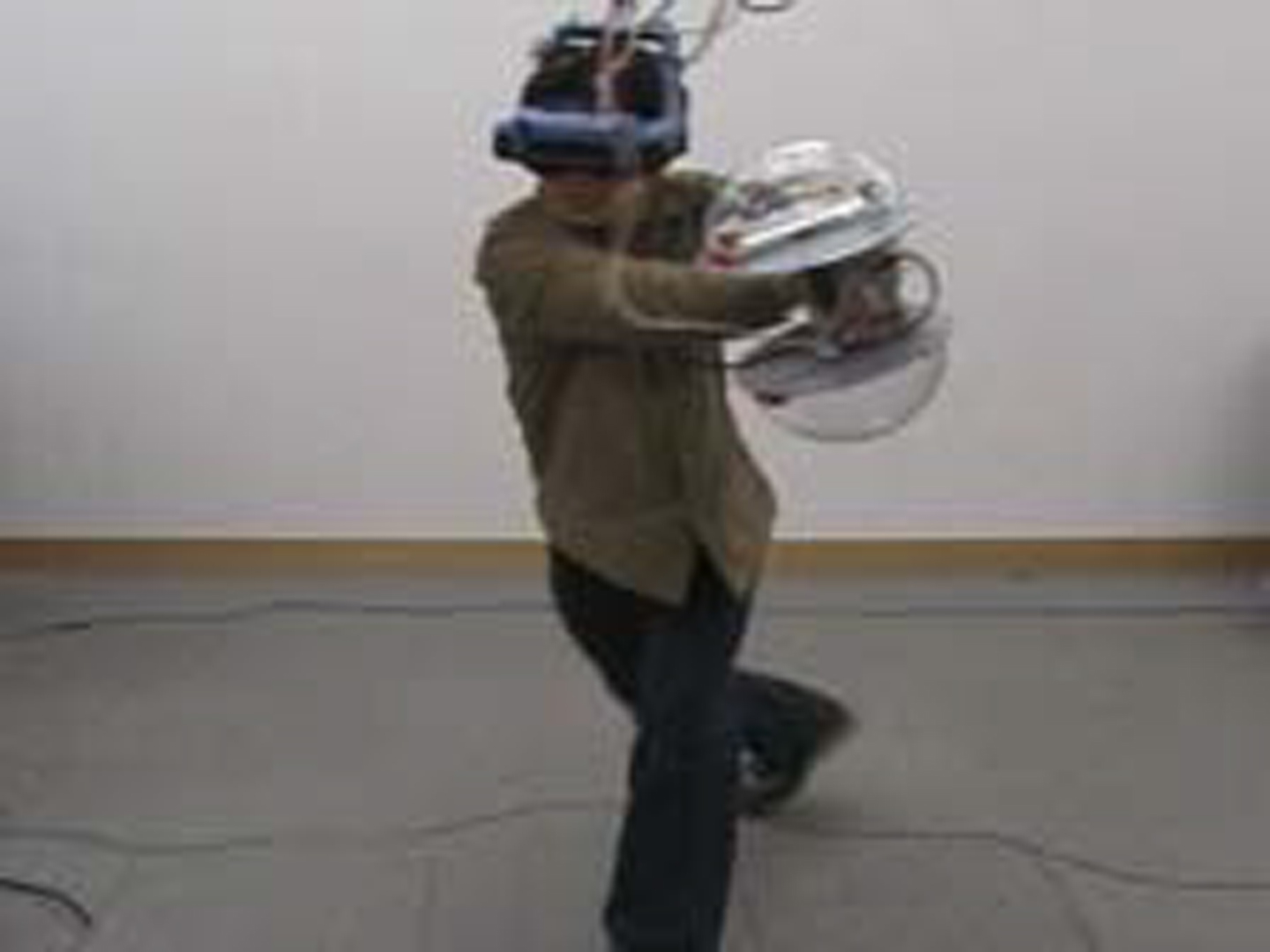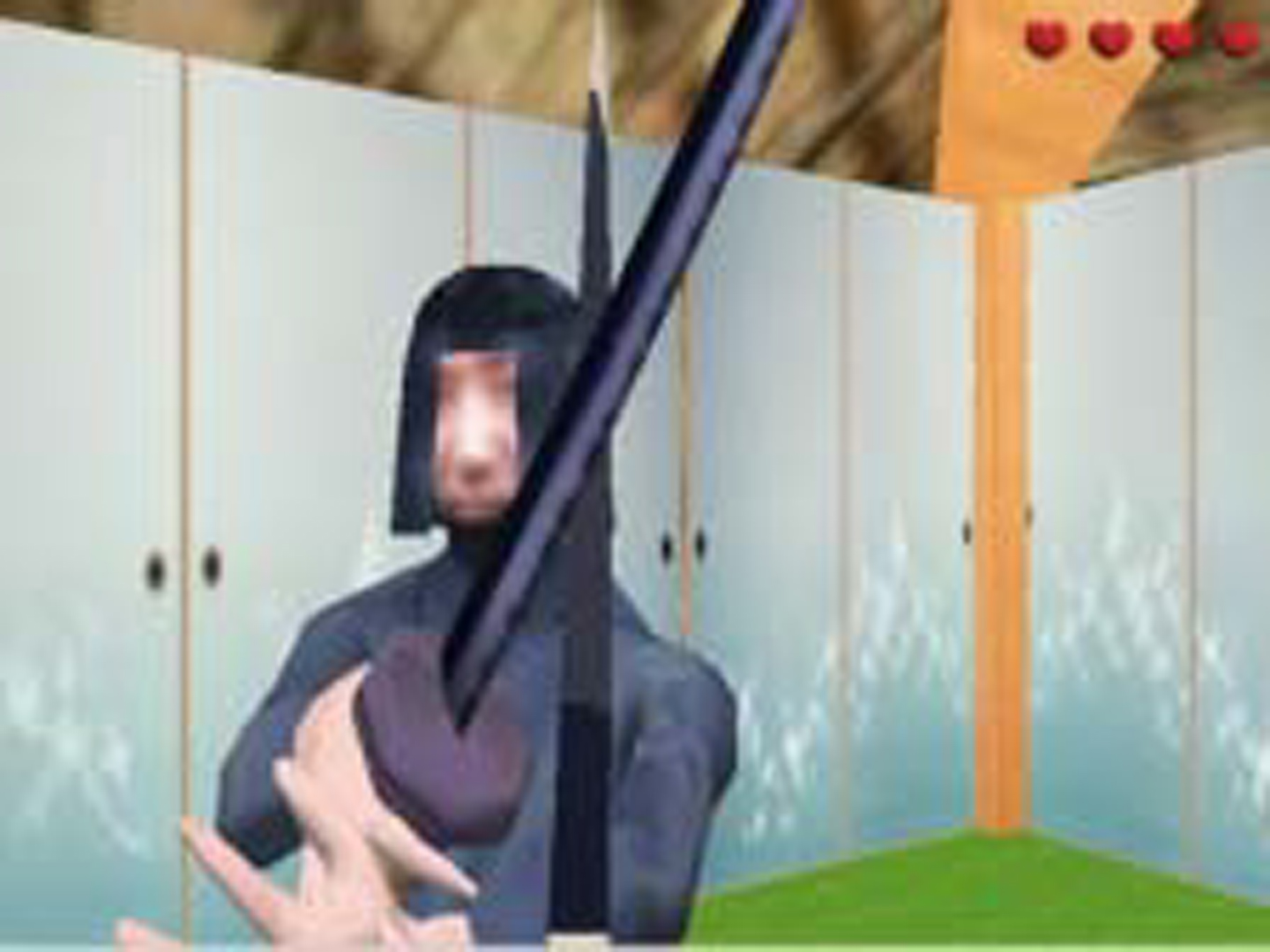“Virtual Chanbara” by Koga and Itagaki
Conference:
- SIGGRAPH 2002
-
More from SIGGRAPH 2002:


Type(s):
E-Tech Type(s):
- Virtual Reality
Entry Number: 83
Title:
- Virtual Chanbara
Presenter(s):
Description:
Abstract
Chanbara is the name of our game, which reproduces the original ancient art of “samurai sword fighting”. For this work, we created a new force feedback device called “GEKI2”. The player holds the sword and wears an HMD. In Chanbara, the player walks around a virtual arena to battle against CG characters.
1 Introduction
Kendo, the art of Japanese swordsmanship, has a long and rich history. Since old-fashioned training with real steel swords and hardwood swords caused so many unnecessary injuries and deaths, harmless bamboo practice swords were created around 1710 developed by Japanese armors and Japanese sword masters. As can be imagined, the original bamboo practice swords and protectors were quite primitive and of simple construction. Now we developed a new type Kendo with virtual reality technology, which uses an HMD and a novel force display, instead of a head protector and a bamboo practice sword.
2 GEKI2
GEKI2 is made up of two motors that create two rotational moments when the player grasps it. Usually, these two motors are spinning, and to generate an impact, GEKI2 will stop both motors immediately. Through the conservation of angular momentum, the inertia will reach the player’s hand, so the hand feels an impulsive force. Immediately after stopping, the motors begin spinning again, although they accelerate gradually, in order not to pose a noticeable force to the hands. We control the acceleration by PWM, making it possible to change the strength of impacts by changing the duration of braking time.
A virtual enemy, virtual sword and virtual arena are displayed with the HMD. The graphics are updated based on the information from the magnetic sensors.
The player attacks the enemy and blocks the enemy’s attacks with the virtual sword. GEKI2 returns an impulsive force to the player’s hands, synchronized with the attacks. We detect whether an attack hits by using the information from the magnetic sensors. The game finishes once the player conquers several enemies, or is defeated (about a few minutes). As we use HMD in this work, the audience can’t see how the player is fighting, so we make a mixed graphics display of the player and computer graphics, shown here. Now, the audience can see how players are fighting and cheer then on. This exciting demonstration is enjoyable for people of all ages.
3 Future Work
We are planning to downsize this device. In addition, Virtual Chanbara is suitable for networked play. In the future, a Chanbara master can instruct worldwide children with this system, and an international match can be held on the Internet.
Keyword(s):
- chanbara
- force display
- virtual reality
Acknowledgements:
Acknowledgements
This study was supported in part by a grant for the Intercollegiate Virtual Reality Contest (IVRC) from Gifu Prefecture and Kakamigahara City.






